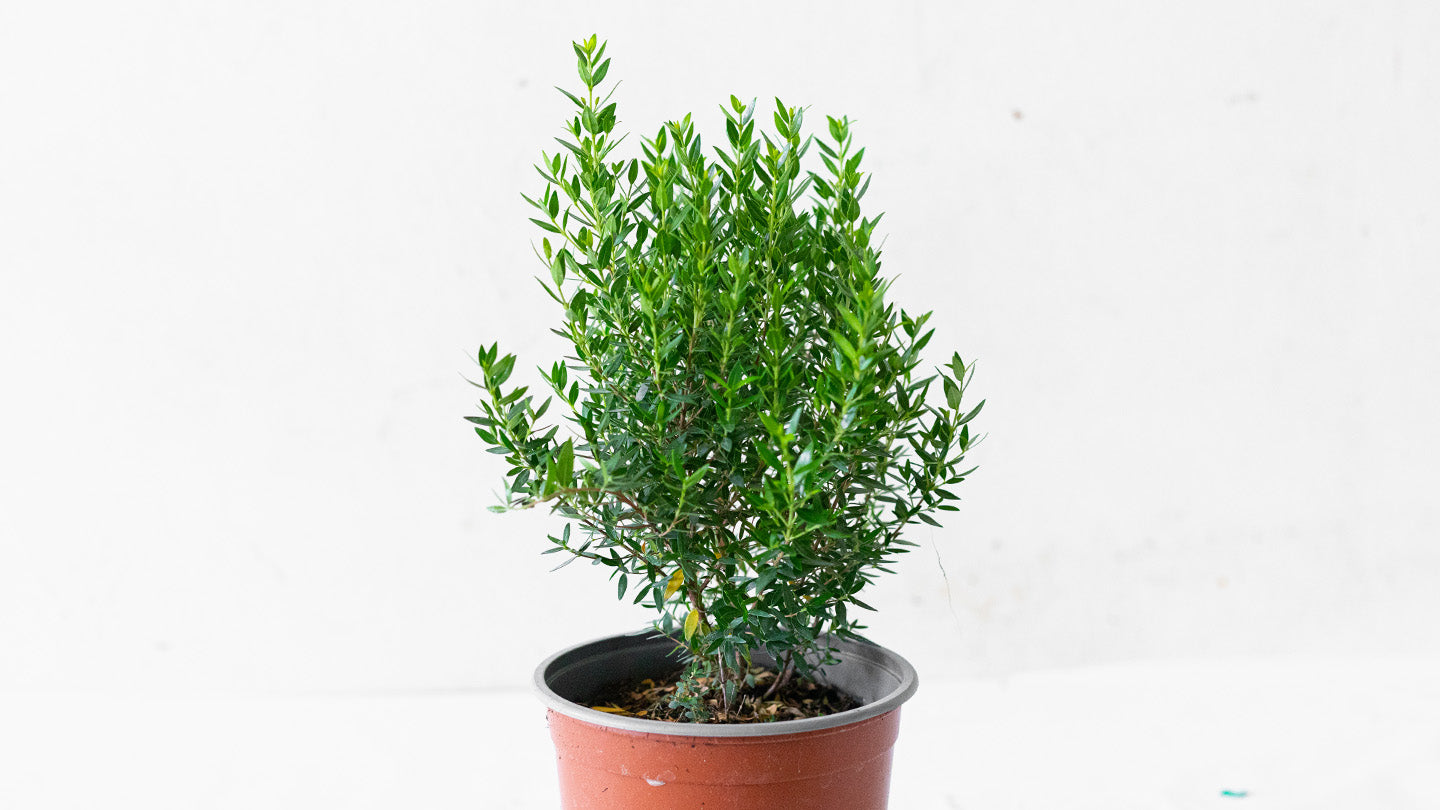cybloom
Myrtus (Mersinia)
Regular price
€6,50 EUR
Regular price
Sale price
€6,50 EUR
Unit price
per
Tax included.
Couldn't load pickup availability
Family: Myrtaceae
Origin: Mediterranean
The Size: 3 to 15 ft. tall, 10 ft. wide
Temperature & Humidity: Hardy in USDA Zones 8-11, the common myrtle is frost tender and hardy to 10 degrees Fahrenheit. It does not tolerate high humidity.
Lightning: Give the plant full to partial sun in a west or south-facing location sheltered from the cold, drying wind. If growing as a bonsai indoors, it will need a lot of light and air. Set in semi-shade outside in the hot summer. In autumn, bring inside a cool room where temperatures are around 50 degrees Fahrenheit. Place on a south-facing windowsill or beneath grow lights.
The Soil: Establish Myrtus communis in moist but well-drained soil. It will adapt to clay or sand, though, for best results, plant under glass in loam-based compost in filtered light with good ventilation. Beware of iron chlorosis in highly alkaline soil that has a pH higher than 8.3. If this occurs, lower the soil pH with a treatment of elemental sulfur or nitrogen fertilizer.
Watering: Water the root ball regularly (once a week or more) when the plant is young, but do not soak as this could also contribute to possible iron chlorosis. An older plant prefers a deeper watering every two to four weeks but can do well without water for shorter periods, as well.
Fertilizer: Outdoors, fertilize once a year in early spring. Indoors, use a liquid fertilizer weekly during the growing season. Watch the plant in the winter because if it's growing even a little bit, you may need to fertilize it every two weeks.
Reproduction: Propagate by seeds or semi-hardwood cuttings in summer. Sow seed under a cold frame in autumn. When new growth begins to firm up, clip non-flowering shoots. If a shoot is flowering, remove the buds first. Plant in a 50/50 mixture of sand and compost out of direct sunlight. Rooting takes six to 12 weeks. Pot each specimen in gritty compost and overwinter indoors in a frost-free location. Transplant outdoors or indoors in spring.
Transfer: The common myrtle can be trained in many bonsai styles, especially broom-style. Every two or three years, repot younger myrtles. Every three to five years, repot the older ones that have been producing more flowers and are likely getting a bit rootbound. Like the water, the soil mix needs to be lime-free. Add some peat or Kanuma to a normal soil mix.
Features of Care: Myrtus communis can be planted in a raised bed, in a container, grouped to form a hedge or border, or as a standalone accent. Drought-tolerant, deer resistant, and low-maintenance, Myrtle works well in a variety of garden types from city to coastal to cottage where it will fill out any sheltered, sunny space gracefully.
Difficulties: Generally, the common myrtle is pest-free outdoors. Sooty mold, which is the "honeydew" excrement from pests, can develop on the foliage to indicate a small scale insect invasion of sucking insects, such as whiteflies, aphids, and mealybugs. Thrips and spider mites may also appear, but in hot, dry weather. An indoor bonsai could be prone to an attack by pests, especially in a warm room that lacks light and moisture in the air.


